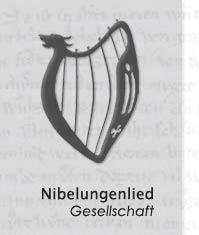|
The
Nibelungenlied
and Worms
from Ulrike Schäfer
|
.... |
Richard Wagner, Painting by Cäsar Willich, 1862 ..
|
Nibelungenlied reception
But researchers are still puzzling over the author and his patron. It is certain, however, that the Nibelungenlied had been forgotten for a long time. In 1757, it was rediscovered by Karl Friedrich Bodemer in Hohenems near Lake Constance. Although it was published in 1782, it was for a long time ignored by the literary studies. Frederick the Great didn't think much of it, and in the beginning even Goethe was disparaging about it. Later he remarked that the work "should become a national book, as soon as it is re-written in proper prose." But its actual rediscovery started in the times of the German Wars of Liberation, when German history was scanned for examples of heroism, and in the Romantic period with its enraptured return to past values. In their strong desire for a national identity people completely lost touch with the European dimension of the work. Developing the ideas of August Wilhelm Schlegel, the poet Heinrich Heine declared the epic the German Iliad. In the revolutions of the democrats in 1848/1849, the focus was especially on "heroic Siegfried". Friedrich Engels described him as a "representative of German youth". Although Heinrich Heine was fascinated with the work and its fierce characters, he shrewdly recognised the explosiveness of the return to the warlike Teutonic heroism. In fact, the murder of Siegfried was misused in the Great War for the picture of the treacherous stab in the back which ostensibly caused the ultimate German defeat ? an idea which is not at all in accordance with the work's nature, just as little as the ideology of the Nordic race and the idea of unshakeable loyalty which Hermann Göring evoked in the face of dying soldiers in Stalingrad.
The Nibelungenlied attained its world fame when it was condensed by Richard Wagner who used the subject for his Ring des Nibelungen between 1848 and 1874. It assumed its explicitly chauvinistic tendency only in the tradition of his heirs and was misused for propaganda with the consent of his family.
Introduction
|


